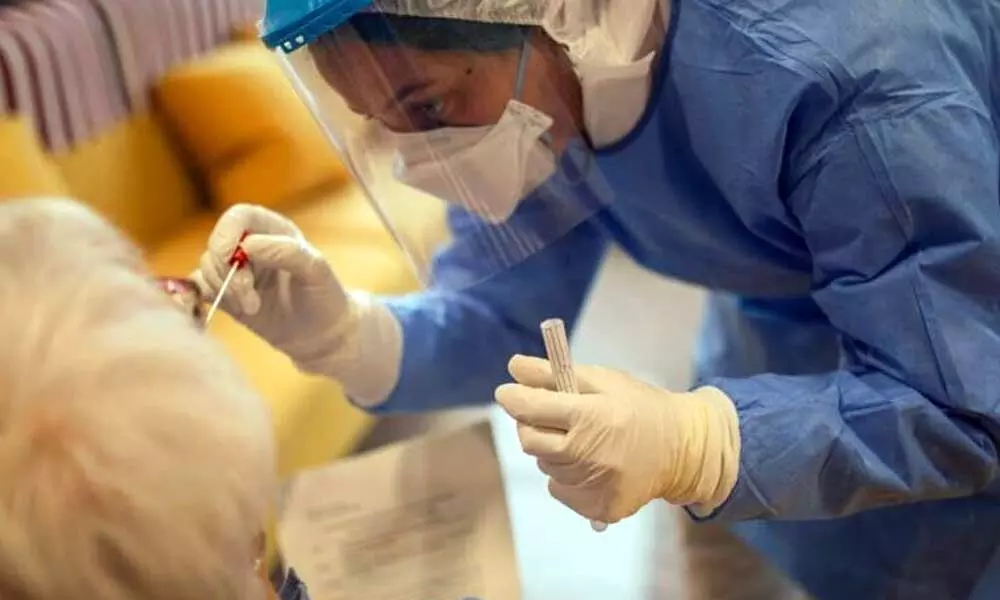Live
- Bad weather: 15 flights diverted, over 100 delayed
- Raj HC stays posting of sub-inspectors
- AP, TG move forward to settle bifurcation issues
- Govt abolishes two-child norm for local body candidates
- Warangal to reverberate with ‘Praja Palana Vijayotsavalu’
- MyVoice: Views of our readers 19th November 2024
- Aurobindo under fire over 108 services
- CPI demands house sites for landless poor
- No shortage of DAP: Haryana CM assures Assembly
- Why Indian pollsters should step back
Just In
WHO says coronavirus is spread by respiratory droplets, not through air


Transmission may also occur by touching surfaces or objects in the immediate environment around the infected person, state-run China Daily quoted the WHO publication as saying.
Beijing: The virus that causes the COVID-19 disease is primarily transmitted through "respiratory droplets and close contacts", and does not seem to stay long in the air, a recent WHO publication said.
Respiratory infections can be transmitted through droplets of different sizes, the World Health Organisation (WHO) said.
Droplet transmission occurs when you have close contact (within one metre) with a person who has respiratory symptoms such as coughing or sneezing, which may spread these potentially infectious droplets, typically 5-10 microns in size, to your body.
Transmission may also occur by touching surfaces or objects in the immediate environment around the infected person, state-run China Daily quoted the WHO publication as saying.
Airborne transmission is different from droplet transmission, as it refers to the presence of microbes within droplet nuclei, which are generally considered to be the smaller particles of less than 5 microns in diameter, and which can remain in the air for long periods of time and be transmitted to others over distances greater than one metre, it said.
In the context of COVID-19, the airborne transmission may be possible in specific circumstances in which procedures or support treatments that generate aerosols are performed, such as intubation within a patient's windpipe, disconnecting a patient from a ventilator, and cardiopulmonary resuscitation (CPR).
According to the publication, no cases of transmission by air were reported in an analysis of 75,465 patients with the coronavirus in China.
Based on the current evidence, the WHO continues to recommend droplet and contact precautions for those people caring for COVID-19 patients.
And it's recommended that people take measures to prevent possible transmission by air when performing medical operations that produce aerosols, it added.
A total of 1,002,159 COVID-19 cases have been reported across more than 175 countries and territories with 51,485 deaths reported so far, according to Johns Hopkins University data.

© 2024 Hyderabad Media House Limited/The Hans India. All rights reserved. Powered by hocalwire.com






